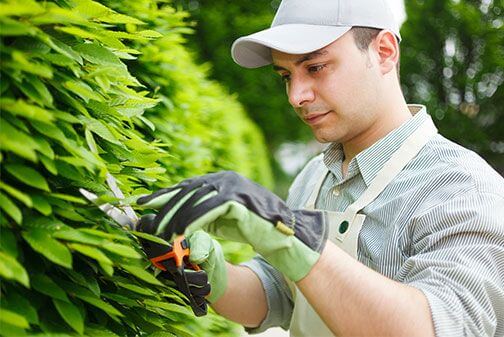6 Unexpected Aspects of Green Waste
Posted on 15/06/2025
In an age where environmental awareness is more critical than ever, the management of green waste, or organic waste, becomes a crucial element of sustainable living. Green waste encompasses a variety of organic materials such as grass clippings, leaves, tree branches, and food scraps. While these materials are biodegradable, improper management can lead to unforeseen consequences. This article explores six unexpected aspects of green waste, shedding light on why efficient handling is essential for ecological balance.
The Environmental Impact
One might assume that because green waste is organic, it breaks down naturally without any adverse effects. However, when green waste is improperly managed, it can have unforeseen environmental impacts. For example, green waste in landfills decomposes anaerobically (without oxygen), producing methane--a potent greenhouse gas that is significantly more harmful than carbon dioxide.
Moreover, runoff from improperly composted green waste can pollute waterways, introducing excessive nutrients that lead to issues like algal blooms and eutrophication. These occurrences can harm aquatic life, disrupt local ecosystems, and create dead zones in large bodies of water.

Economic Considerations
Another unexpected aspect of green waste is its economic implications. The collection and disposal of green waste incur costs for municipalities and taxpayers. However, by promoting proper composting and recycling practices, these costs can be mitigated. Composting green waste can create valuable products like mulch and compost, which can be sold or used to enrich public spaces, gardens, and farmlands.
Moreover, creating a local composting program can generate jobs and stimulate local economies. The sale of compost can offset the costs associated with waste management, turning a potential financial burden into an economic opportunity. Thus, the economic considerations surrounding green waste are multifaceted and offer potential benefits when managed appropriately.
Health Impacts
Improper management of green waste can have direct and indirect health impacts on humans and animals. Accumulated green waste can attract pests like rodents and insects, which can carry diseases. Mosquitoes, for instance, can breed in the stagnant water collected in yard debris, increasing the risk of vector-borne diseases such as West Nile Virus and Zika.
Additionally, when green waste is burned, it releases harmful pollutants, including particulate matter, carbon monoxide, and volatile organic compounds (VOCs). These toxins can lead to respiratory issues, cardiovascular problems, and other health conditions, particularly for vulnerable populations like children, the elderly, and those with preexisting health conditions.
Soil Health and Fertility
One of the positive aspects of properly managed green waste is its ability to improve soil health and fertility. When green waste is composted, it creates humus--a rich, nutrient-dense material that enhances soil structure, aeration, and water retention capacity. Proper composting breaks down organic materials into a stable form that provides essential nutrients to plants.
The introduction of compost into the soil can also promote microbial activity, which contributes to nutrient cycling and soil health. However, it is essential to ensure that compost is made correctly to avoid introducing pathogens and weed seeds into the soil. This underscores the importance of proper education and management in composting practices.
Legislation and Regulation
Green waste management is subject to various laws and regulations that can impact how it is handled at the local, state, and national levels. Regulations often dictate how waste should be collected, processed, and disposed of, aiming to minimize environmental impact and promote recycling.
Some regions implement mandatory green waste recycling programs, offering curbside collection services to encourage composting. Others might impose fines for improper disposal of green waste, such as illegal dumping or burning. Understanding the local legislation surrounding green waste is crucial for compliance and effective management practices.

Innovative Technologies and Practices
Innovation in green waste management has introduced a variety of technologies and practices that make disposal and recycling more efficient and sustainable. For example, anaerobic digestion systems can convert green waste into biogas, a renewable energy source that can be used for heating, electricity, or even as vehicle fuel.
Moreover, advancements in composting techniques, such as in-vessel composting, allow for faster and more controlled decomposition processes. Technologies like smart sensors and data analytics can optimize waste collection routes and monitor compost quality, ensuring better management and outcome.
Community-based initiatives also play a significant role in green waste management. Shared composting facilities and urban gardening projects can foster community engagement, educating residents on the importance of sustainable practices while providing practical solutions for green waste disposal.
Conclusion
Green waste management encompasses various unexpected aspects that extend beyond simply decomposing organic material. The environmental, economic, health, soil fertility, regulatory, and technological aspects of green waste illustrate the complexity and importance of effective management practices.
Understanding these dimensions helps in making informed decisions and adopting practices that promote sustainability. By recognizing the broader impact of green waste, individuals, communities, and policymakers can work together to implement solutions that benefit both the environment and society.






